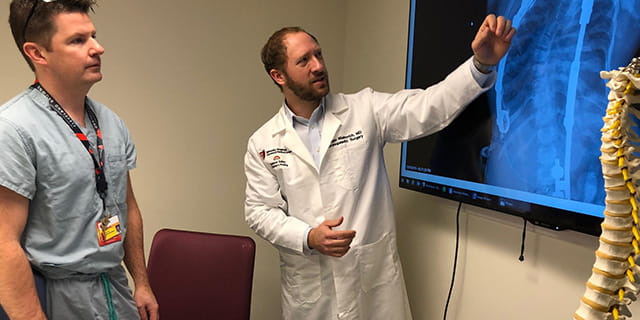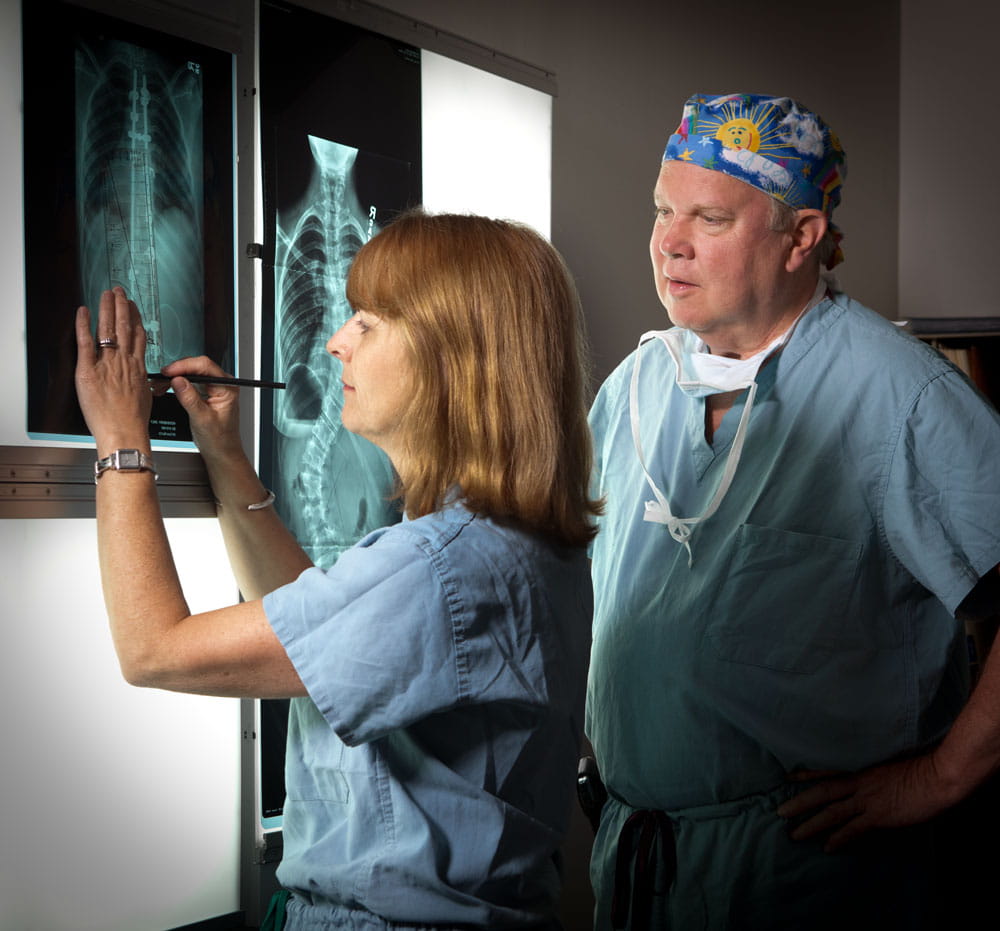Scoliosis Research
 University Hospitals Rainbow Babies & Children’s Hospital established a database to track outcomes and trends for pediatric orthopedic patients that have spinal deformity. It is the largest pediatric orthopedic spine database in a single institution in the United States, cataloguing information on over 2,900 patients, 20,000 evaluations and every patient that had spinal deformity surgery at UH Rainbow since 1992 – about 3,000 surgeries. The extensive database serves as the foundation of pediatric orthopedic surgery spine research and is used by our surgeons seeking to find answers to specific questions.
University Hospitals Rainbow Babies & Children’s Hospital established a database to track outcomes and trends for pediatric orthopedic patients that have spinal deformity. It is the largest pediatric orthopedic spine database in a single institution in the United States, cataloguing information on over 2,900 patients, 20,000 evaluations and every patient that had spinal deformity surgery at UH Rainbow since 1992 – about 3,000 surgeries. The extensive database serves as the foundation of pediatric orthopedic surgery spine research and is used by our surgeons seeking to find answers to specific questions.
 Connie Poe-Kochert, RN, CNP, worked to establish the database in 1995. The research has appeared in every major pediatric orthopedic publication in the past few decades and has been presented extensively at orthopedic and pediatric meetings and Grand Rounds.
Connie Poe-Kochert, RN, CNP, worked to establish the database in 1995. The research has appeared in every major pediatric orthopedic publication in the past few decades and has been presented extensively at orthopedic and pediatric meetings and Grand Rounds.
This valuable repository of patient information is used to:
- Document and monitor patient's major curves to show trends by patient gender, age and other demographics
- Establish characteristics and symptoms associated with early onset scoliosis
- Optimize patient care
- Predict outcomes and need for interventions
- Improve quality of care through a solid continuity of care
- Afford the ability to step back and review current protocols to determine if a change to the standards of care is warranted
Over the years, our team has met and worked with thousands of families from Northeast Ohio and beyond. UH Rainbow Babies & Children’s providers become an intimate part of these families since scoliosis identified at a very early age in some patients are followed well beyond their adolescent years.
The research has answered questions such as: Is spinal fusion the last procedure in the series of lengthening to treat early onset scoliosis? This was a commonly held belief among the pediatric spinal surgery physicians until the data in our database showed that 20 percent of patients needed further surgical interventions. Another question: What is the alternative way to control and manage pain for scoliosis patients? The database’s answer: patients were better managed with intrathecal morphine, which has become the standard of care at UH Rainbow Babies & Children’s Hospital and many other major pediatric spine programs in North America.


